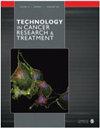A 3 M Evaluation Protocol for Examining Lymph Nodes in Cancer Patients: Multi-Modal, Multi-Omics, Multi-Stage Approach
IF 2.7
4区 医学
Q3 ONCOLOGY
引用次数: 0
Abstract
Through meticulous examination of lymph nodes, the stage and severity of cancer can be determined. This information is invaluable for doctors to select the most appropriate treatment plan and predict patient prognosis; however, any oversight in the examination of lymph nodes may lead to cancer metastasis and poor prognosis. In this review, we summarize a significant number of articles supported by statistical data and clinical experience, proposing a standardized evaluation protocol for lymph nodes. This protocol begins with preoperative imaging to assess the presence of lymph node metastasis. Radiomics has replaced the single-modality approach, and deep learning models have been constructed to assist in image analysis with superior performance to that of the human eye. The focus of this review lies in intraoperative lymphadenectomy. Multiple international authorities have recommended specific numbers for lymphadenectomy in various cancers, providing surgeons with clear guidelines. These numbers are calculated by applying various statistical methods and real-world data. In the third chapter, we mention the growing concern about immune impairment caused by lymph node dissection, as the lack of CD8 memory T cells may have a negative impact on postoperative immunotherapy. Both excessive and less lymph node dissection have led to conflicting findings on postoperative immunotherapy. In conclusion, we propose a protocol that can be referenced by surgeons. With the systematic management of lymph nodes, we can control tumor progression with the greatest possible likelihood, optimize the preoperative examination process, reduce intraoperative risks, and improve postoperative quality of life.检查癌症患者淋巴结的 3 M 评估方案:多模式、多指标、多阶段方法
通过对淋巴结的细致检查,可以确定癌症的分期和严重程度。这些信息对于医生选择最合适的治疗方案和预测患者预后非常宝贵;然而,淋巴结检查中的任何疏忽都可能导致癌症转移和不良预后。在这篇综述中,我们总结了大量有统计数据和临床经验支持的文章,提出了淋巴结的标准化评估方案。该方案从术前成像开始,评估是否存在淋巴结转移。放射组学已经取代了单一模式的方法,深度学习模型已经被构建出来用于辅助图像分析,其性能优于人眼。本综述的重点在于术中淋巴结切除术。多个国际权威机构推荐了各种癌症淋巴结切除的具体数字,为外科医生提供了明确的指导。这些数字是通过各种统计方法和实际数据计算得出的。在第三章中,我们提到人们越来越关注淋巴结清扫造成的免疫损伤,因为缺乏 CD8 记忆 T 细胞可能会对术后免疫治疗产生负面影响。淋巴结清扫过多和过少都会导致术后免疫治疗的结果相互矛盾。总之,我们提出了一个可供外科医生参考的方案。通过淋巴结的系统管理,我们可以最大可能地控制肿瘤进展,优化术前检查流程,降低术中风险,提高术后生活质量。
本文章由计算机程序翻译,如有差异,请以英文原文为准。
求助全文
约1分钟内获得全文
求助全文
来源期刊
CiteScore
4.40
自引率
0.00%
发文量
202
审稿时长
2 months
期刊介绍:
Technology in Cancer Research & Treatment (TCRT) is a JCR-ranked, broad-spectrum, open access, peer-reviewed publication whose aim is to provide researchers and clinicians with a platform to share and discuss developments in the prevention, diagnosis, treatment, and monitoring of cancer.

 求助内容:
求助内容: 应助结果提醒方式:
应助结果提醒方式:


